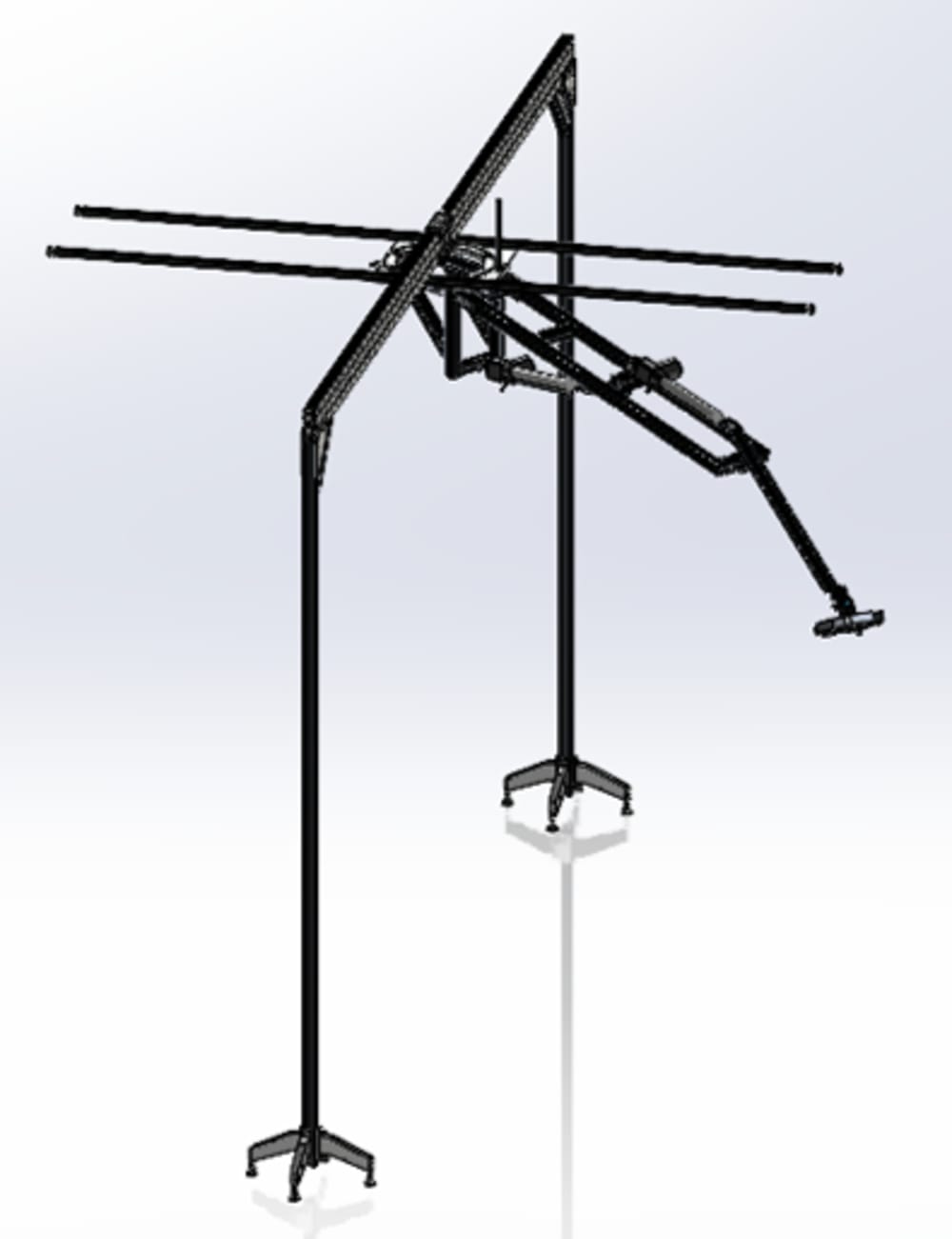Surgical lighting systems (SLSs) are critical for visualizing an operating site during surgery. Optimal illumination requires constant SLS repositioning, but this process can be distracting and dangerous. Manual lighting adjustments occur on average every 7.5 minutes during surgery, and 64% of these actions interrupt the staff’s other surgical duties. Operational studies indicate that repositioning often leads to collisions or “stuck” lights. The Autonomous/Remote Control Operating Light (ARCOL) is a robotic SLS that addresses these challenges through autonomous movement and remote control capabilities. ARCOL offers distraction-free and continuously optimized illumination for improved lighting precision, surgical efficiency, and patient outcomes.
The ARCOL system possesses five degrees of freedom for maximum repositioning flexibility. The arm and support structure are constructed from modular aluminum components. A central motor turns an arm assembly consisting of Arm 1 and Arm 2. A linear actuator manipulates each arm. Two high-torque servo motors on the end of Arm 2 provide 270° of light head tilt and pan. This innovative positioning system can reposition the light head anywhere within a two meter radius in under ten seconds with zero light head drift.
During use, a surgeon wears a laser designator to indicate the desired target for illumination. Another operator uses a controller to reposition the system and toggle between remote-control and autonomous modes. In autonomous mode, a microprocessor analyzes overhead and light head camera feeds for the presence or absence of laser light. This control system continuously aligns the light head camera with the laser light and moves the arm to navigate around obstacles. A LiDAR scanner simultaneously monitors the position of the arm and any objects in the OR. This system allows ARCOL to operate above the tallest object in the OR for safety. During a simulated surgery, ARCOL achieved real-time laser tracking, collision avoidance, and a 50% reduction in the rate of manual position adjustments compared to a traditional SLS.
The ARCOL project is not only medically innovative but also commercially appealing. The primary market segment for this system is trauma centers, larger hospitals with higher procedure volumes and overhead costs. Operating costs for ORs in these facilities often exceed $100 per minute, and repositioning actions usually take about one minute apiece, so ARCOL’s 50% reduction in manual repositioning could translate into $1,200 in direct savings for a representative three hour surgery. If the ARCOL system were priced at $89,000 to be competitive with existing high-end products, a hospital could recoup the cost from this overhead reduction alone in under 75 procedures. ARCOL could also generate excellent margins if commercialized, seeing as the total prototyping cost was under $8,500. The global market for OR lighting was $1.143 billion in 2023, and the compound adjusted growth rate through 2028 is estimated at 3.5%, yet no competitors in this industry have produced an autonomous system. The device therefore fills an uncontested niche in the large and rapidly growing SLS market. With attractive value propositions for both users and investors, the ARCOL project represents a brighter future for surgical lighting.
Video
Like this entry?
-
About the Entrant
- Name:Carson Benner
- Type of entry:teamTeam members:
- Connor Gilliland
- Jack Wingard
- Rawan Al-Jubory
- Zachary Butterfield
- Anthony Salazar
- Patent status:pending









